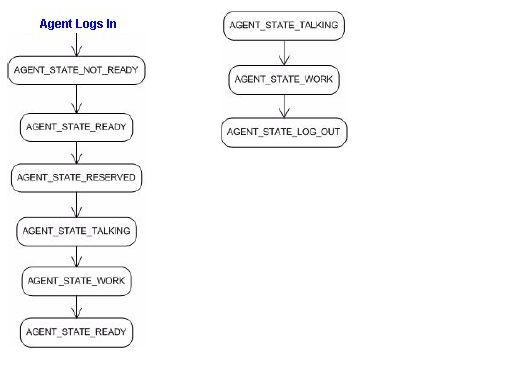The Causes of Agent-State Transitions
Call events and events from the Cisco Agent Desktop (CAD) and the agent IP phone change the agent state.
Figure 1 contains two example agent state transitions, one at the beginning of the day when the agent logs in and one when the agent logs out. In that figure:
-
The agent logs in and is immediately recorded as Not Ready.
-
When the agent is Ready, the client sets the agent to this state by using the SET_AGENT_STATE_REQ message.
-
When Unified CCX sends a call to the agent, the agent’s state becomes Reserved.
-
As soon as the agent answers the call, the agent’s state becomes Talking.
-
The agent indicates any after call work by using the SET_AGENT_STATE_REQ message.
-
The client sets the agent state to Ready by using the SET_AGENT_STATE_REQ message with the Ready state when the agent is available for the next call.
